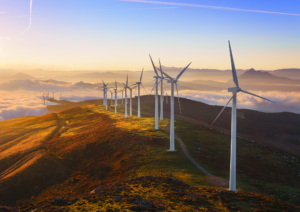ESG, also known as Environmental, Social, and Governance criteria, are non-financial factors that measure the ethical impact and sustainability of investment in a company. These factors cover a wide variety of issues that have historically been ignored by profit and bottom-line driven financial analysis. Spurred on by refocused attention on climate issues and the COVID-19 pandemic, to say that ESG investments are up and coming would be an understatement. Now more than ever, stakeholders such as investors and shareholders want to know that a company is not only profitable but sustainable in every sense of the word. Setting their sights on longevity and ethics, these very same stakeholders are prioritising investments with a conscience.
This isn’t just empty rhetoric – sustainability and ESG focused funds made up a $649b marketplace worldwide in 2021 and the US alone saw a record-breaking $10.5b of inflow in the first quarter of 2020 alone. Looking at these numbers alone, the word ‘lucrative’ definitely springs to mind. If you’re someone that has just heard of ESG investments or want a brief idea of what the investment landscape looks like, here are some trends to start examining in closer detail.
Carbon Offsetting
The term carbon offsetting refers to the process of compensating for carbon emissions arising from industrial or other human activity. For example, a manufacturing plant that has a large carbon footprint due to its industrial processes can purchase carbon credits to offset their overall net carbon emissions. The goal of these schemes is to convey net climate benefits from one entity to another, functioning as a proxy since carbon emissions are global and the end results are positive towards the climate.
What was once a relatively niche marketplace for the swapping of carbon credits has now erupted as companies wear their low-carbon emission numbers like a badge of honour. ESG-minded investors place heavy emphasis on the sustainability and environmental impact of the logistics chain, and having a low carbon footprint is a massive boom in the marketplace. Opportunities in the mainstream carbon offsetting market have appeared in the form of carbon offset Exchange Traded Funds (ETFs). These ETFs pool investments and track the performance of carbon credits on the marketplace, making it accessible to retail investors and private equity firms alike. Other variations such as the SparkChange Physical Carbon EUA ETC (CO2) pools equity in order to buy off carbon allowances from the market and prevent polluters from freely offsetting their emissions.
Asia’s Increase in ESG Commitments
In 2020, ESG investments surged in the Asia-Pacific (APAC) region. Experts touted that the disastrous impacts of COVID-19 played a large part in the importance of ESG issues among investors. Having seen a glimpse of the future, around 79% of Asian-Pacific investors increased their ESG investments either ‘significantly’ or ‘moderately’, according to the MSCI 2021 Global Institutional Investor survey.
With the largest population density concentrated in the Asia-Pacific as a whole, this shift in paradigm brings heavy implications for the rest of the world. Ultimately, many markets are dictated by the equity flow amongst heavy players such as China and Japan. This changing of the tides also reinforces awareness among global investors that the APAC region is ripe for the additional capital influx. Chief among these are projects relating to clean and sustainable energy, green construction and buildings, as well as data-driven sustainable agricultural processes. There is also a hefty opportunity for investors looking to derive long term gains via investments in infrastructure development. Countries such as Indonesia, Thailand, and Vietnam have been heavily reliant on coal and natural gas supplies to power nationwide electricity demands. It is only a matter of time before the pivot begins towards solar, geothermal, hydropower, and wind-based sources. In that regard, an overhaul of the electric grid and mainlines will be necessary – funded by a mix of private and government investment to advance.
The Improvement of ESG Data
The leap forward for data and the Internet of Things (IoT) has done much for ESG investment opportunities as well. Hedge funds and private equity firms are leveraging ESG data, together with traditional financial analysis to identify sustainable investment opportunities. Information such as environmental data which displays annual carbon emissions, energy consumption, water use, and pollution output, now lend a tangible and quantifiable feel to challenges that were once viewed as abstract problems to solve. This data also builds into consumer trust by making transparent the indisputable workings behind each organisation and entities ESG policies.
Wise investors, retail or otherwise, can bank on this information to make well-informed ESG investment choices. Putting the figures on a balance sheet should allow them to derive a numerical value as to the risk-reward potential of these investments. A more hands-on approach with data and IoT is the use of smart devices in their respective organisations to optimise energy usage and efficiency. By getting practical experience in how such data-capturing devices can benefit them, investors might see fit to get out their cheque books and buy into the value of ESG data.
Critics that decry ESG investments as a passing trend might be shocked to see that it has dug in its heels in the landscape of finance. Powered by a renewed conviction within the zeitgeist for sustainability and environmental care, ESG investments don’t seem to be going away any time soon.





